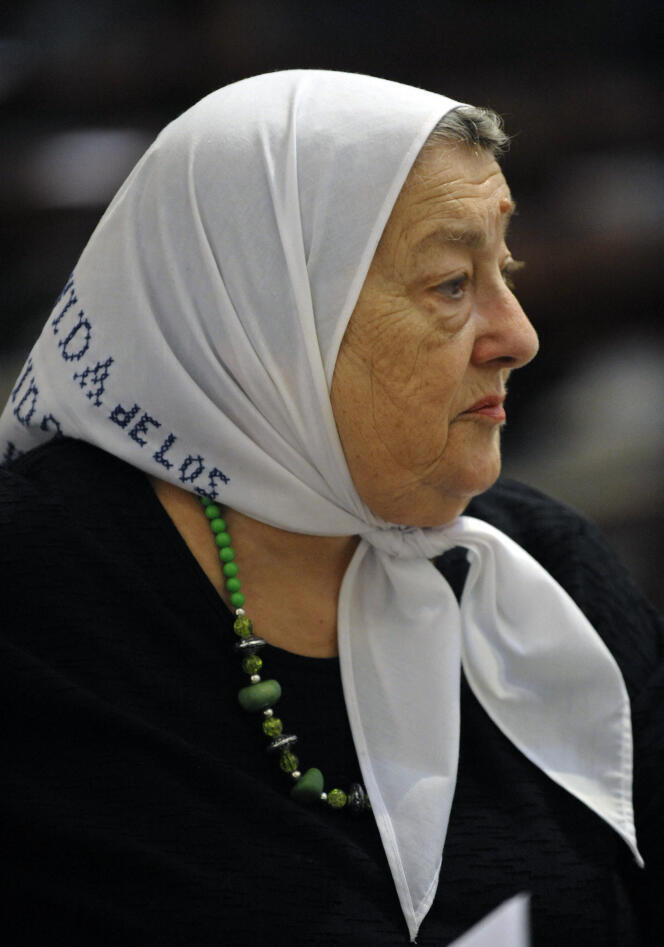Argentina: Hebe de Bonafin, iconic and controversial human rights figure, dies


Hebe Pastor de Bonafin was born twice. On December 4, 1928, first in the popular neighborhood of Ensenada, 60 kilometers south of Buenos Aires. then in 1977, when his two sons, students and communist activists, disappeared; First, Jorge, the eldest son, in February, then Raul, in December. Where are they ? With no news, no response from the authorities—Argentina has been in the hands of a military junta since 1976—Hebe de Bonafin, under her married name, joined other women that year who gathered in May square in front of the presidential building. Palace in Buenos Aires to demand the truth about the fate of their children. A spontaneous commitment that would mark his life as much as Argentina’s, even in the most controversial way.
“What children [disparus] made us”, does not hesitate to summarize the one who presided over the Mothers of the Place de May until his death on November 20, 2022, at the age of 93. The association is, among other things, fighting for justice after the death (or disappearance) of 30,000 people during the dictatorship, according to human rights organizations.
“Hebbe de Bonafin leaves a huge legacy. It epitomized the struggle of the Mothers of May Place, who represented the first and most profound attack on the dictatorship. It can be said that he participated in the downfall of the junta.”According to the author of the photographic biography Ulises Gorini (Los Caminos de la Vida, 2022, translated) on what the Argentines call “hebe”. Her public image is inseparable from the white scarf tied around her head, symbolizing torn diapers, a symbol quickly adopted by the mothers of the Place de Mai after their first gathering on April 30, 1977.
“I never stopped”
“At the most brutal and repressive moment of the dictatorship, mothers gather. Hebe icon of Bonafini. His courage and strength of character caused him to be elected president by his comrades.In 1979, when the association was formalized, describes Marianella Scoco, historian of the National Council for Scientific and Technical Research (Conicet). “He turns his pain into a fight”, continues the academic specialist of the association. It was Hebe de Bonafin who, during the 1978 World Cup, organized and won by Argentina and with other mothers, fought to divert the gaze of foreign cameras to the atrocities of the regime. His struggle and figure transcends the borders of his country. Since 1979 he has been traveling in Europe and the United States.
Source: Le Monde
Leave a Reply